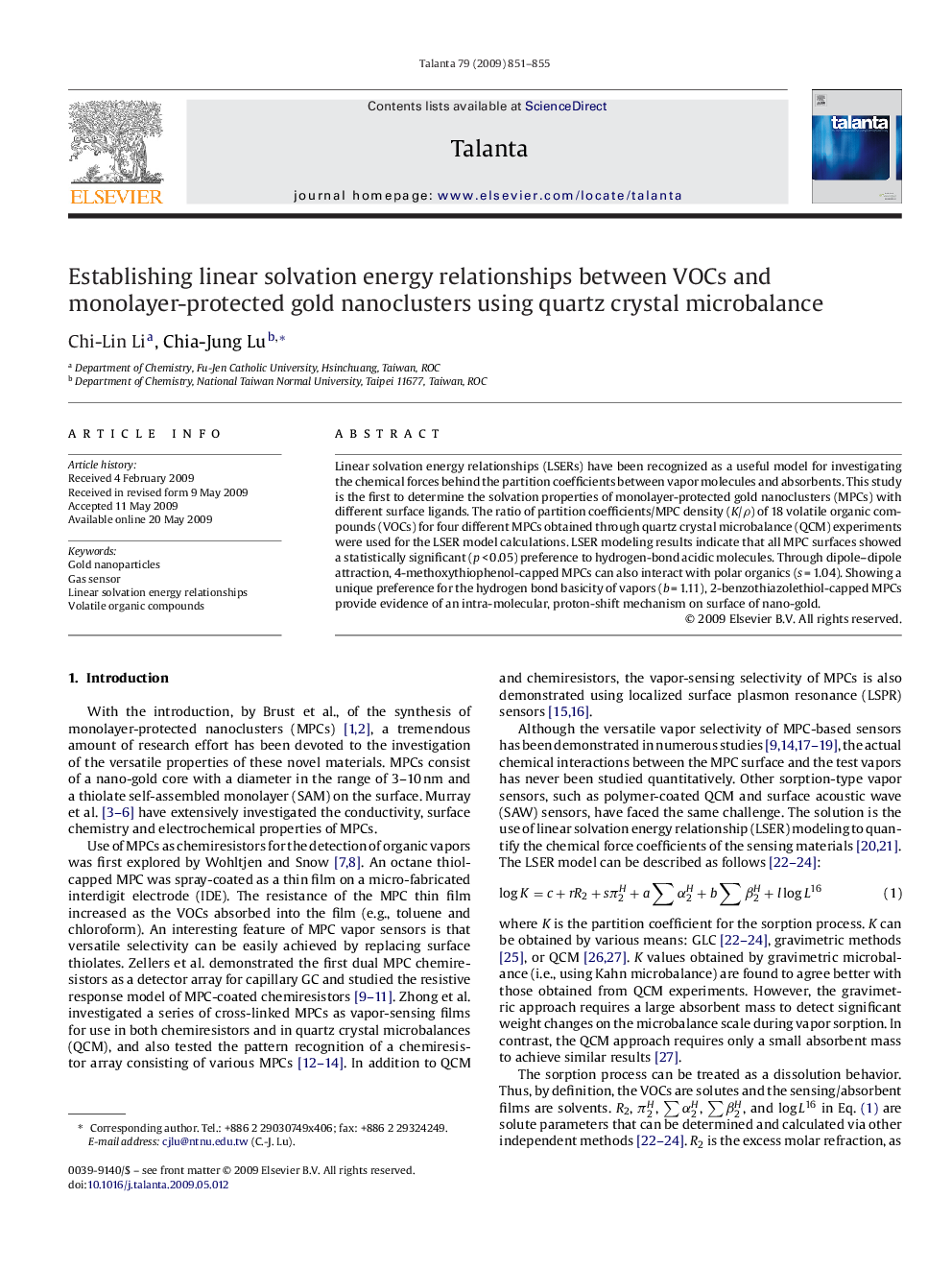| Article ID | Journal | Published Year | Pages | File Type |
|---|---|---|---|---|
| 10559643 | Talanta | 2009 | 5 Pages |
Abstract
Linear solvation energy relationships (LSERs) have been recognized as a useful model for investigating the chemical forces behind the partition coefficients between vapor molecules and absorbents. This study is the first to determine the solvation properties of monolayer-protected gold nanoclusters (MPCs) with different surface ligands. The ratio of partition coefficients/MPC density (K/Ï) of 18 volatile organic compounds (VOCs) for four different MPCs obtained through quartz crystal microbalance (QCM) experiments were used for the LSER model calculations. LSER modeling results indicate that all MPC surfaces showed a statistically significant (p < 0.05) preference to hydrogen-bond acidic molecules. Through dipole-dipole attraction, 4-methoxythiophenol-capped MPCs can also interact with polar organics (s = 1.04). Showing a unique preference for the hydrogen bond basicity of vapors (b = 1.11), 2-benzothiazolethiol-capped MPCs provide evidence of an intra-molecular, proton-shift mechanism on surface of nano-gold.
Keywords
Related Topics
Physical Sciences and Engineering
Chemistry
Analytical Chemistry
Authors
Chi-Lin Li, Chia-Jung Lu,
